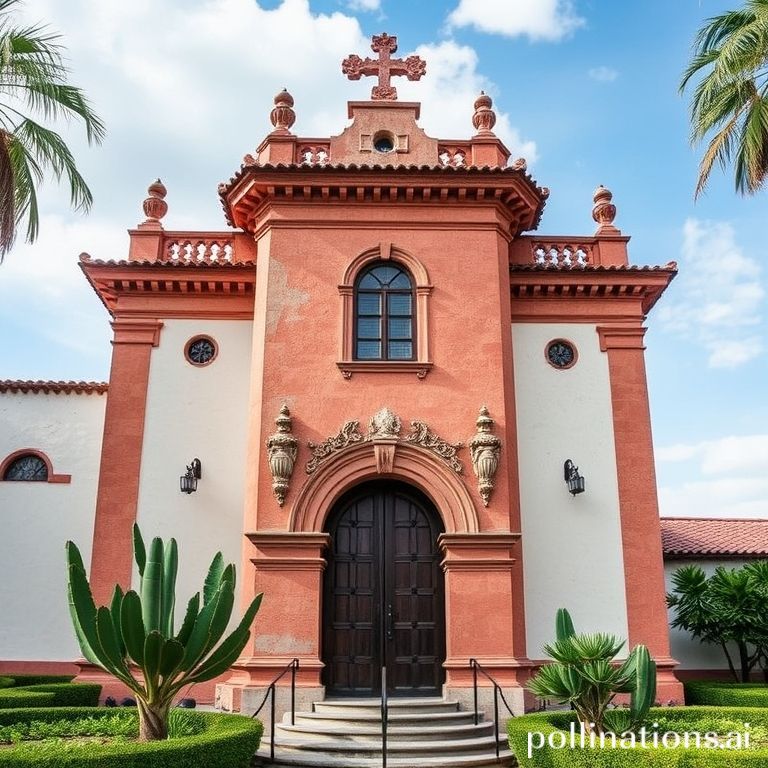Mexico, a land of vibrant culture and rich history, boasts a unique architectural landscape that tells a story of cultural fusion. While ancient civilizations like the Maya and Aztecs left an indelible mark, the Spanish colonial period significantly shaped the buildings and cities we see today. The Spanish influence on Mexican architecture is undeniable, blending European styles with indigenous traditions to create a truly distinctive aesthetic.
From grand cathedrals to colorful haciendas, the architectural heritage of Mexico reflects a fascinating interplay between the Old World and the New. Exploring this influence allows us to understand not just the buildings themselves, but also the historical and cultural forces that shaped modern Mexico.
Colonial Architectural Styles Introduced by the Spanish
The Spanish brought with them a variety of architectural styles that were popular in Europe at the time. These styles were adapted and modified to suit the local climate, available materials, and the skills of indigenous artisans. Some of the most prominent styles include:
- Baroque: Characterized by elaborate ornamentation, dramatic curves, and a sense of grandeur, the Baroque style is evident in many Mexican churches and government buildings.
- Renaissance: Featuring symmetrical designs, classical columns, and a focus on proportion, the Renaissance style provided a foundation for many colonial structures.
- Plateresque: A uniquely Spanish style, Plateresque is known for its intricate, low-relief ornamentation that resembles silverwork (plata in Spanish). This style is often seen on facades and doorways.
- Neoclassical: This style emerged later in the colonial period, emphasizing clean lines, geometric forms, and a return to classical Greek and Roman principles.
Key Architectural Elements and Features
Beyond specific styles, the Spanish introduced several key architectural elements and features that became hallmarks of Mexican colonial architecture:
The Use of Arches and Vaults
Arches and vaults, common in European architecture, were widely adopted in Mexico for their structural strength and aesthetic appeal. They allowed for the creation of larger, more open spaces, particularly in churches and public buildings.
The Central Courtyard (Patio)
The central courtyard, or patio, became a standard feature in Mexican homes and public buildings. This enclosed space provided a private oasis, offering shade, ventilation, and a connection to nature. Often adorned with fountains, gardens, and arcades, the patio became a focal point of social life.
Elaborate Facades
Spanish colonial architecture is known for its ornate facades, often adorned with sculptures, carvings, and decorative elements. These facades served as a visual expression of power, wealth, and religious devotion.
Examples of Spanish Influence on Mexican Architecture
Throughout Mexico, numerous buildings stand as testaments to the enduring influence of Spanish architecture:
- Mexico City Metropolitan Cathedral: A magnificent example of Baroque and Neoclassical architecture, this cathedral took centuries to build and showcases a blend of styles.
- Templo de Santo Domingo, Oaxaca: This church is renowned for its incredibly detailed Baroque facade, showcasing the artistry of indigenous craftsmen.
- Haciendas of the Yucatan Peninsula: These former estates reflect a blend of Spanish colonial and Mayan architectural styles, featuring grand houses, courtyards, and agricultural buildings.
- Historic Center of Puebla: This UNESCO World Heritage site is filled with colonial buildings featuring Talavera tiles, a colorful ceramic tradition that reflects both Spanish and indigenous influences.
The Blending of Styles: Indigenous Adaptations
While the Spanish introduced European architectural styles, indigenous artisans and builders played a crucial role in adapting and transforming these styles. They incorporated local materials, techniques, and decorative motifs, resulting in a unique fusion of cultures. For example, indigenous craftsmen often incorporated traditional symbols and designs into the ornamentation of churches, blending their own beliefs with those of the Spanish colonizers. The use of local stone, such as volcanic rock, also contributed to the distinctive character of Mexican colonial architecture.
Conclusion
The Spanish influence on Mexican architecture is a defining aspect of the country’s cultural heritage. From grand cathedrals to humble homes, the architectural landscape of Mexico reflects a fascinating blend of European styles and indigenous traditions. By understanding this influence, we gain a deeper appreciation for the rich history and cultural diversity of Mexico. These buildings stand not just as structures, but as enduring symbols of a complex and transformative period in Mexican history.
If you enjoyed this article, don’t forget to explore more inspiring stories on Life in Mexico!
IMAGE: A wide-angle shot of the Mexico City Metropolitan Cathedral at dusk. The sky is a deep blue with hints of orange and pink from the setting sun. The cathedral is brightly lit, showcasing its Baroque and Neoclassical architectural details. In the foreground, a bustling city square with people strolling and street vendors. The overall mood is majestic, historical, and vibrant, capturing the essence of Mexico City. Style: Realistic, architectural photography.


